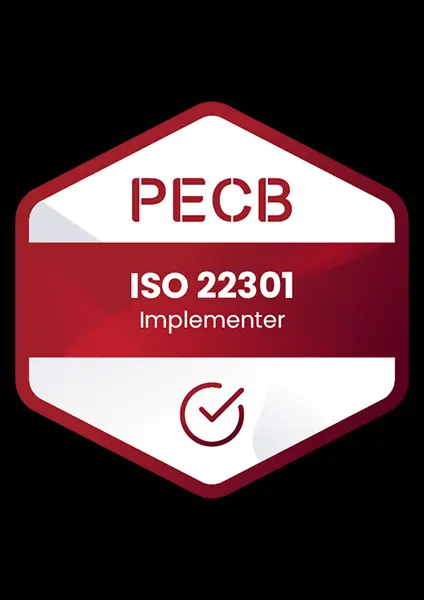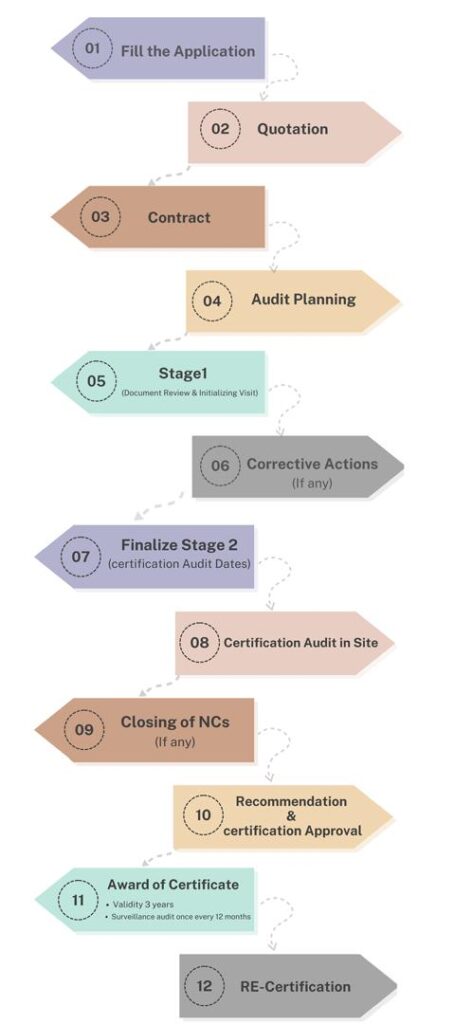In an unpredictable world, ensuring business continuity during disruptions is critical for organizations of all sizes and industries. ISO 22301:2019, the international standard for Business Continuity Management Systems (BCMS), provides a structured framework for identifying potential risks, minimizing their impact, and ensuring the continuity of operations.
This article delves into the essentials of ISO 22301:2019, its benefits, practical implementation steps, and actionable insights to help businesses safeguard their future and thrive amidst uncertainties.
What Is ISO 22301:2019?
ISO 22301:2019 is the international standard for Business Continuity Management Systems (BCMS). It offers guidelines for organizations to prepare for, respond to, and recover from disruptive incidents. The standard applies to various types of disruptions, including:
- Natural disasters
- Cyberattacks
- Supply chain interruptions
- Operational failures
This updated version of ISO 22301 places greater emphasis on performance evaluation and continual improvement, aligning with modern business challenges and best practices.

Why Is ISO 22301:2019 Important?
Unexpected disruptions can lead to financial losses, reputational damage, and even business closure. ISO 22301:2019 provides a proactive approach to mitigating these risks, ensuring organizations remain resilient and operational.
Key Benefits of ISO 22301:2019
- Minimized Downtime A well-implemented BCMS ensures quick recovery, reducing downtime and operational impact.
- Increased Resilience By identifying potential vulnerabilities, organizations can strengthen their defenses and adapt to challenges.
- Regulatory Compliance Many industries require business continuity plans to meet legal and regulatory standards. ISO 22301:2019 helps achieve compliance.
- Improved Stakeholder Confidence Certification demonstrates a commitment to reliability, boosting trust among customers, investors, and partners.
- Cost Savings Proactive planning reduces the financial impact of disruptions and enhances operational efficiency.
- Global Recognition ISO 22301:2019 certification is internationally recognized, providing a competitive edge in global markets.
Core Components of ISO 22301:2019
The standard follows the Plan-Do-Check-Act (PDCA) cycle, ensuring continual improvement and effective management. Key components include:
- Context of the Organization
Understanding internal and external factors, such as industry-specific risks and stakeholder expectations.
- Leadership Commitment
Top management must take responsibility for establishing and maintaining the BCMS.
- Risk Assessment
Identifying and analyzing potential risks to prioritize actions and allocate resources.
- Business Impact Analysis (BIA)
Evaluating the impact of disruptions on critical functions and setting recovery time objectives.
- Business Continuity Strategy
Developing strategies to ensure the availability of critical resources and functions.
- Operational Planning and Control
Implementing procedures and controls to manage disruptions effectively.
- Testing and Exercises
Regularly testing the BCMS to validate its effectiveness and identify areas for improvement.
- Performance Evaluation
Monitoring and measuring the BCMS to ensure it meets organizational goals and regulatory requirements.
Steps to Implement ISO 22301:2019
- Understand the Standard
Gain a thorough understanding of ISO 22301:2019 requirements and how they align with your organization’s objectives. Consider training sessions or consulting experts.
- Conduct a Gap Analysis
Assess your current business continuity practices to identify gaps between existing processes and the standard’s requirements.
- Define Scope and Objectives
Determine the scope of your BCMS, including key functions, processes, and stakeholders.
- Perform a Risk Assessment
Identify potential threats, vulnerabilities, and risks. Analyze their likelihood and impact to prioritize actions.
- Conduct a Business Impact Analysis
Understand the consequences of disruptions on critical business functions and set recovery priorities.
- Develop Business Continuity Plans
Create detailed plans outlining steps to maintain or restore operations during disruptions. Include communication protocols, resource allocation, and recovery time objectives.
- Train and Educate
Provide training to employees to ensure they understand their roles in the BCMS and how to respond during incidents.
- Test and Validate
Conduct regular drills and simulations to test the effectiveness of your BCMS and refine it based on lessons learned.
- Monitor and Improve
Establish metrics to monitor the performance of your BCMS and update plans to address emerging risks or changes in the business environment.
- Certification Audit
Engage an accredited certification body to evaluate your BCMS and issue ISO 22301:2019 certification upon compliance.
Examples of ISO 22301:2019 in Action
Case Study: Banking Sector
A major bank implemented ISO 22301:2019 to enhance its business continuity planning. By conducting regular risk assessments and testing recovery plans, the bank minimized disruptions during a cyberattack, maintaining critical services and safeguarding customer trust.
Case Study: Manufacturing Industry
A manufacturing company used ISO 22301:2019 to address supply chain vulnerabilities. By developing alternative sourcing strategies and communication protocols, the company reduced production delays during a supplier crisis, saving millions in potential losses.
Practical Tips for ISO 22301:2019 Implementation
- Engage Leadership Secure commitment from top management to allocate resources and drive the implementation process.
- Leverage Technology Use tools like risk management software and automated alert systems to enhance monitoring and response capabilities.
- Focus on Communication Develop clear communication plans to ensure timely and accurate information flow during disruptions.
- Test Realistically Conduct scenario-based tests that reflect actual risks your organization might face.
- Involve Stakeholders Collaborate with employees, suppliers, and partners to ensure alignment and readiness across the board.
Challenges and How to Overcome Them
- Resistance to Change
Employees may resist new processes. Address this by involving them early and highlighting the benefits of a robust BCMS.
- Resource Constraints
Small organizations may face budget limitations. Start by focusing on high-impact areas and scaling efforts over time.
- Keeping Plans Updated
Regularly review and update your BCMS to address changes in risks, technologies, or organizational structures.
Conclusion
ISO 22301:2019 is an invaluable tool for organizations seeking to enhance resilience, maintain operations during disruptions, and protect their stakeholders. By adopting its framework, businesses can navigate uncertainties with confidence and secure long-term success.
Whether you’re a small business or a multinational corporation, ISO 22301:2019 provides the strategies and tools to prepare for the unexpected. Start implementing its principles today to safeguard your organization’s future and thrive in a rapidly changing world.
Certification Process
1- Completion of information related to the company name, company activities, the number of staff per work shift, website address, and branches.
2- Announcement of costs related to the requested certification issuance process.
3- Preparation and approval of the contract for implementation.
4- Planning the audit process and notifying the client for audit process.
5- reviewing documents to identify the client strengths and weaknesses in comparison to the established documentation.
6- Corrective actions for potential weaknesses.
7- Final planning for conducting the audit, registration, and certification issuance.
8- Conducting the on-site audit process at the client by the specialized team of the certifying company.
9- Corrective actions for potential weaknesses in the execution of the organization’s processes.
10- Recommendation for the issuance of a certification related to the client to the head office.
11- Achieving the related certification.
12- Renew after three years.


